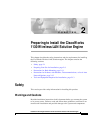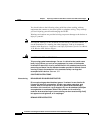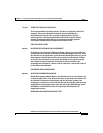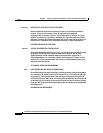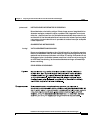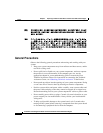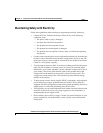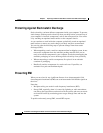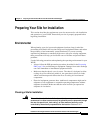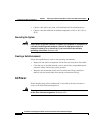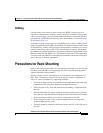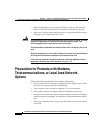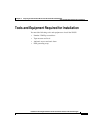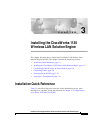
Chapter 2 Preparing to Install the CiscoWorks 1130 Wireless LAN Solution Engine
Safety
2-8
Installation and Configuration Guide for the CiscoWorks Wireless LAN Solution Engine
78-15903-01
Protecting Against Electrostatic Discharge
Static electricity can harm delicate components inside your computer. To prevent
static damage, discharge static electricity from your body before you touch any of
your computer’s electronic components, such as the microprocessor. You can do
so by touching an unpainted metal surface on the computer chassis.
As you continue to work inside the computer, periodically touch an unpainted
metal surface to remove any static charge your body may have accumulated.
You can also take the following steps to prevent damage from electrostatic
discharge (ESD):
• When unpacking a static-sensitive component from its shipping carton, do not
remove the component from the antistatic packing material until you are
ready to install the component in your computer. Just before unwrapping the
antistatic packaging, be sure to discharge static electricity from your body.
• When transporting a sensitive component, first place it in an antistatic
container or packaging.
• Handle all sensitive components in a static-safe area. If possible, use
antistatic floor pads and workbench pads.
Preventing EMI
When you run wires for any significant distance in an electromagnetic field,
electromagnetic interference (EMI) can occur between the field and the signals on
the wires.
Note that:
• Bad plant wiring can result in radio frequency interference (RFI).
• Strong EMI, especially when it is caused by lightning or radio transmitters,
can destroy the signal drivers and receivers in the system, and can even create
an electrical hazard by conducting power surges through lines and into the
system.
To predict and remedy strong EMI, consult RFI experts.




